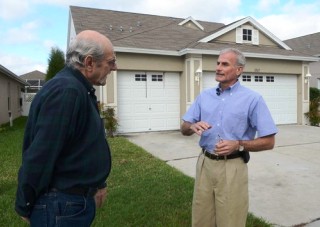|
Article Courtesy of The Tampa Tribune By Published November 13, 2011 LAND O' LAKES -- Sen. Mike Fasano wants the state to investigate why one of the nation's largest homebuilders didn't tell prospective buyers that their homes were built on top of a former landfill. The state senator's request follows a recent report in The Tampa Tribune that revealed neighbors were not informed that the builder removed debris from beneath their homes and buried it under the neighborhood's soccer field.
In a statement, Lennar said it complied with required disclosures and worked with the state through the process. "We have worked with the Department of Environmental Protection to conduct all follow up testing," the developer said. "We are eager to meet with Senator Fasano and the Attorney General to set the record straight. We believe it is important that everyone understands the history of the Suncoast Meadows site." Now that homeowners know about the landfill, they worry about their property values and their health. Monitoring wells from time to time have shown methane readings that some experts say are high enough to risk an explosion, state records show. Excessive levels of ammonia have been found in groundwater samples. "At a minimum, they had a responsibility to disclose that to the purchaser, …" Fasano said. "I can tell you, most of these people would not be living here today if they knew there was a landfill where their house is today." Fasano sent a letter this week to Florida Attorney General Pam Bondi. He asked that she review documents Lennar gave homeowners when they purchased their homes. "I have great concerns that the building company did not adequately notify the residents of the issues with the landfill before they bought their homes," Fasano wrote in his letter. "As you can see from the disclosure statement and the manual, … there is only minor and nondescript mention of a small area of debris in the neighborhood, not the landfill that existed under each home." Suncoast Meadows was built during the housing boom, when large, master-planned communities were in high demand. Lennar discovered a landfill on part of the property early in the planning stages and asked the state for advice on how to fix the problem so it could still build the neighborhood. The Florida Department of Environmental Protection told the developer to remove the trash before building and to put something other than homes on that part of the property. The builder decided to put the pool and cabana on the former landfill area. The landfill was mentioned in a brief statement tucked inside manuals provided to homeowners at closing. But years into construction on the neighborhood, Lennar discovered that the landfill was bigger than it had realized and stretched into an area slated for about 50 homes. That, however, wasn't spelled out to buyers. Lennar said disclosure wasn't necessary because debris under homes was removed by the time homeowners bought them. "That area was cleared of debris and replaced with clean backfill material," according to a Lennar statement. "No additional disclosures were made because debris no longer existed there." Now that homeowners know, though, real estate attorneys say they're legally required to disclose it to the next buyer. If they don't, they could be sued later. What real estate lawyers aren't clear about is whether the 1985 Florida Supreme Court case would also apply to corporations. If it doesn't, Fasano said he plans to propose a law that would do just that. But any new law would not help the residents of Suncoast Meadows who worry they're stuck with their homes. The homeowners association has interviewed lawyers to represent them but has had trouble finding one the association can afford to hire. The group plans to meet next week to discuss their legal options. Gilad Livingstone, president of the association, said he welcomes help from lawmakers. "I'm ecstatic the senator is getting involved," Livingstone said. "You can imagine how we all feel out here. We're worried and feel screwed. Even if [Fasano] can't help us, I hope a new law gets on the books so this doesn't happen to another neighborhood." Fasano visited the neighborhood last week and worries that building on the old landfill led to settling issues, which he said could possibly lead to sinkholes. He walked the streets where the former landfill was. "I've lived in my neighborhood for 20 years and don't have cracks like this," Fasano said, pointing out cracks and separation in the driveways of several adjacent homes. "Look here, look at the cracks in the street, the cracks in the driveway." |
